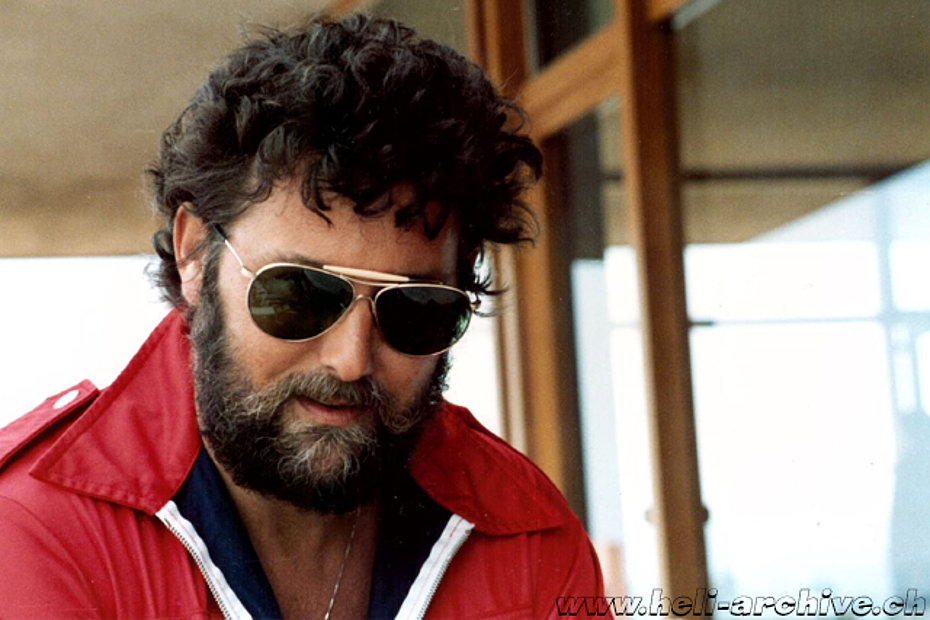
On October 1, 2017 the local newspapers reported sad news: following the serious injuries reported after a fall from a cliff during a walk in Corsica in company of his wife Anni, Heinz von Wyl, a helicopter pilot well known mainly South of the Alps where he had begun to work on behalf of Air Grischa starting from 1981, lost his life. Let's retrace his story together.
Heinz von Wyl was born on May 30, 1947 in Hergiswil, Nidwalden, preceded by the brothers Lotti and Edi. Although as a child he had become a part of the scouts, from a young age he manifested a keen passion for aviation. His dream as a child was to be a pilot. In Hergiswil, where in 1817 the Siegwart brothers founded the Glasi, the famous Swiss company that produces glassware, now a popular tourist attraction, Heinz attended primary and secondary schools, then embarked on a civil engineering apprenticeship followed by an apprenticeship as a mason. In both professions he obtained the federal diploma.
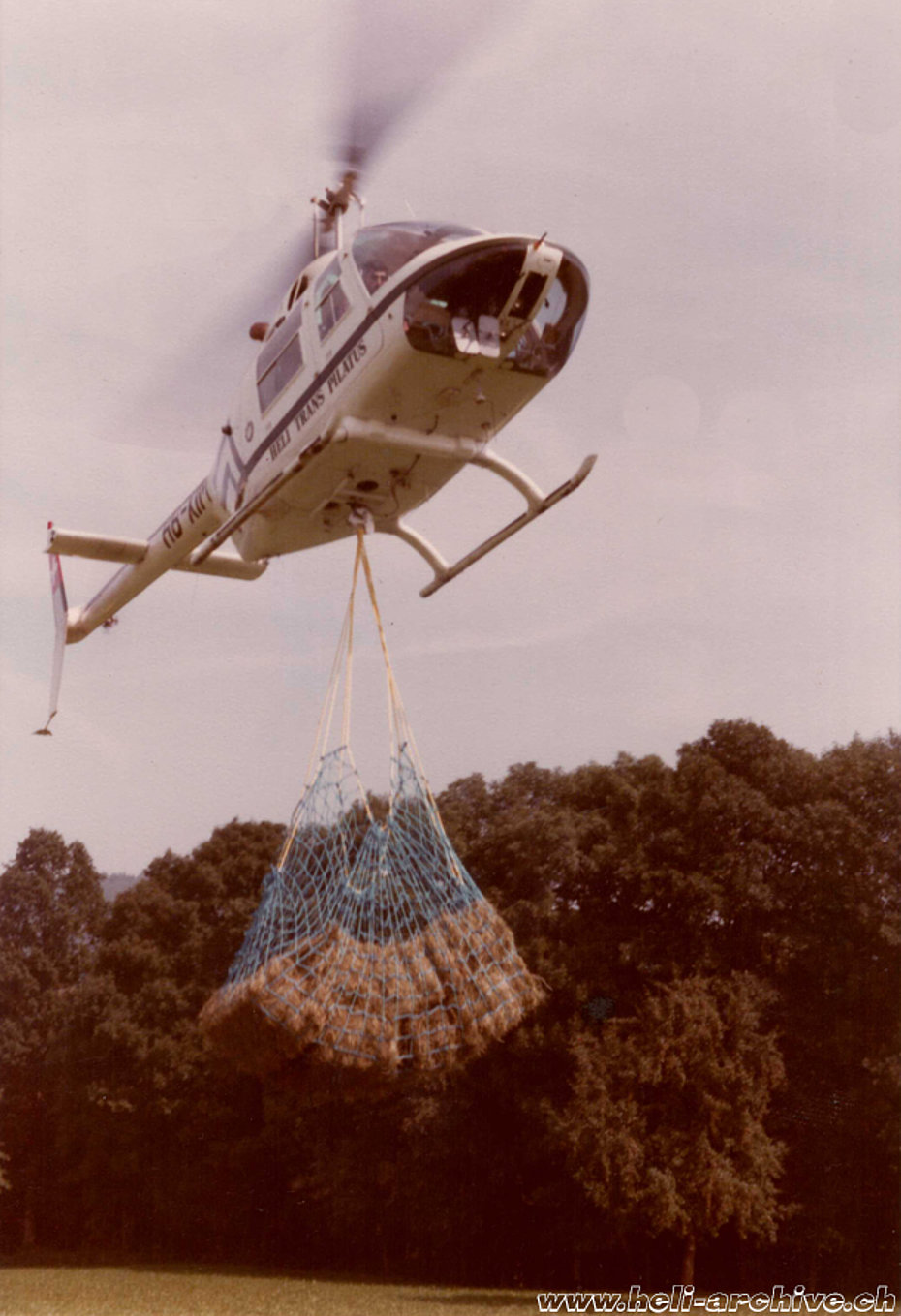
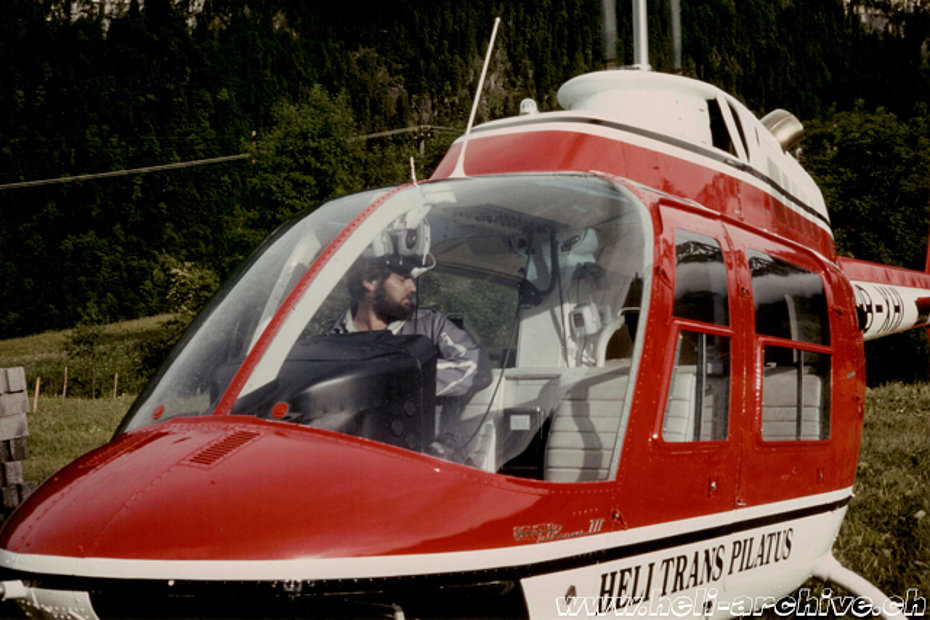
During the period of compulsory military service he was incorporated as a mountain grenadier (Gebirgs Granadier 12) after which he was transferred to the light aviation (Leichte Fliegerstaffel).
Thereafter he became a site manager in the building industry. Simultaneously in the early 1970s he joined the flight school as a private airplane pilot at Beromünster/LU airport.
Start of the aeronautical career
After obtaining the license as an airplane pilot Heinz von Wyl decided to undertake the career as a professional helicopter pilot.
He started the flight training at Buttwil/AG on the Enstrom F-28A at the Flugschule Eichenberger AG. At the end of the training on June 15, 1976, the Federal Office of Civil Aviation granted him the professional helicopter pilot license nr. 195.
His wife Anni, whom he had married on May 23, 1970, recalls that during that time Heinz worked very hard also in the evening trying to earn some extra money to cope with the costs of obtaining the flight license.
The following year with his wife and the four children (Martin, Andreas, Thomas and Veronika) he moved temporarily to Lagos, Nigeria. There, over two different time periods between 1977 and 1978, he carried out supply flights for the oil wells on behalf of the British company Bristow Helicopters Ltd. piloting helicopters of the type Bell 206B Jet Ranger and Hughes 500.
Always in those years, trying to accumulate hours of flight, during the summer time he carried out photographic flights in Austria at the controls of a Bell 47. At the end of the overseas jobs he returned to Switzerland.
Pilot of Heli-Trans Pilatus
On May 1, 1979 with a flight experience of about 1,000 hours under his belt Heinz von Wyl was hired by the helicopter company Heli-Trans Pilatus AG with headquarters in Emmenbrücke (Canton Lucerne). The newly-founded company directed by Peter Jürg Schönauer had a Bell 206B Jet Ranger II (HB-XIM) purchased secondhand in Germany. With this aircraft Heinz carried out, especially in Central Switzerland, all kinds of flights such as for example the transportation of people and building material, sightseeing flights, supplies of alpine pastures and huts, fertilizer spreading, photographic flights, artificial avalanches detachment.

In Müswangen/LU on April 28, 1980 after a flight of twenty minutes and having executed 5 autorotations at the controls of the Agusta-Bell 206B Jet Ranger III HB-XHI (the second helicopter employed by Heli-Trans Pilatus) the examiner Walter Demuth released to him, on behalf of the FOCA, the certificate of flight instructor.
Type-rating on the Hiller
On July 15, 1980 at Stans/LU Heinz von Wyl, trained by Walter Ulrich Eisenhut, began the training course on the Hiller-Soloy UH-12E4T HB-XLF, the new helicopter purchased by the rapidly expanding Heli-Trans Pilatus.
After some familiarization flights by the beginning of August he started to fly frequently with this aircraft.
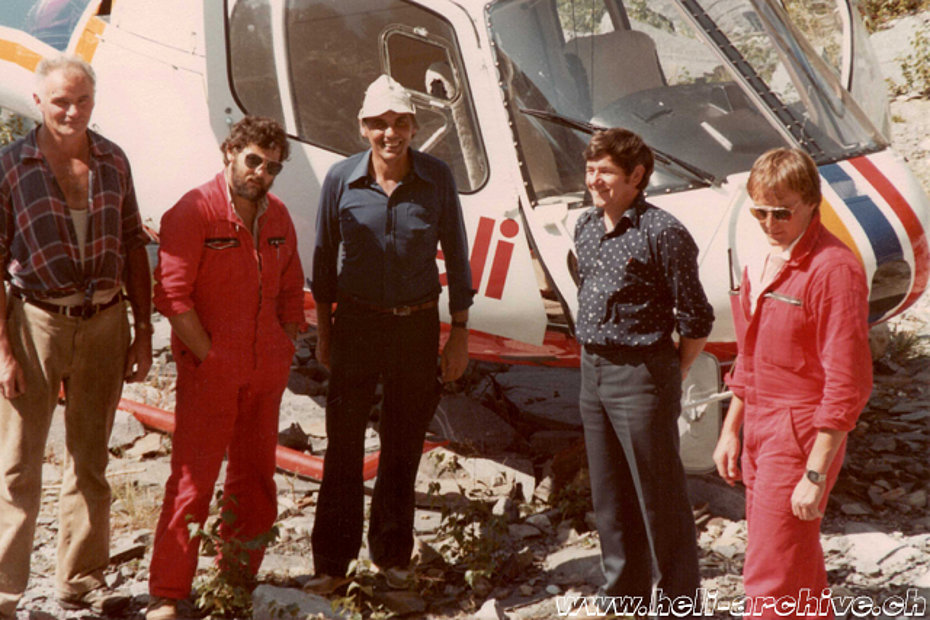
The first commercial transports were made at Morat/FR on August 10. During the following weeks at the controls of this aircraft he carried out numerous transportations of people and construction material. The helicopter proved to be a true "mule of the air" as it could carry underslung loads up to a maximum of 685 kg! On August 21 three supply flights were carried out to supply the Rugghubelhütte at 2,290 m/asl at the bottom of the Engelberg Valley (Canton Obwalden). In that occasion the helicopter transported underslung loads weighting 550, 600 and 650 kg. Always using HB-XLF that same day he transported an injured cow.
On October 28, 1980, while carrying a load of concrete to Emmetten/NW, he was forced to execute an emergency landing after a sudden loss of power. After being inspected by the technical service of the Pilatus company of Stans the Hiller-Soloy UH-12E4T resumed its flying activity.
Hiller-Killer
On November 22, 1980 Heinz von Wyl was involved in a series of logging flights on the southern slope of the Pilatus, a mountainous massif in the Swiss Pre-Alps near Lucerne, which gave its name to the most important Swiss aircraft manufacturer (Pilatus Aircraft Ltd.).
Before lifting the logs vertically – these were laying in a forest clearing at 1,400 m/asl – they were dragged briefly along the slope. To do this the pilot tilted the helicopter slightly backwards.
Shortly before lunch, after having already completed twenty rotations without any problems, while he was dragging a large log, the acoustic alarm "low rpm" suddenly rang along with the red light indication "engine failure". The HB-XLF quickly lost altitude and after bumping the ground, it overturned.
Fortunately, in this accident Heinz von Wyl sustained only minor scratches, but the helicopter was damaged beyond repair.
The Aeronautical Accident Investigation Committee concluded that the accident was caused by a turbine flame out and also pointed out among other reasons the inadequate position of the fuel tanks draft point as well as a gap in the instructions on the minimum quantity of fuel required to continue the flight.
The misadventure, which could have had much more serious consequences for the pilot, revived the nickname Hiller-Killer affixed to the helicopter by the cadets of the U. S. Army Primary Helicopter Center and School in Fort Wolters, Texas. Thousands of military pilots were trained there who carried out the basic Pilot school on Hiller OH-23 Raven, the Bell OH-13 Sioux and Hughes TH-55 Osage.
Shortly after the accident Heinz von Wyl left Heli-Trans Pilatus for new professional challenges.
Helicopter pilot on behalf of Air Grischa
As of January 1, 1981, he was hired as a pilot by Air Grischa to replace Erwin Schafrath at the heliport of San Vittore/GR, who in the spring returned to fly on behalf of Eliticino.
After many years the grand patron of the Swiss Helicopter group, the lawyer Dr Jürg Riedi, still remembers the recruitment interview for a very specific reason: "The first time I saw Heinz von Wyl, because of his physical appearance and the thick beard I could not help noticing a strong resemblance to the usual image that we have of our national hero William Tell. For a moment I imagined Heinz dressed with a jacket and a crossbow on his shoulder; It would have been perfect to impersonate the legendary Swiss hero".
In view of his new job, on January 29 and 30, 1981 the newly engaged pilot went to Marignane/France to Aérospatiale to attend the piloting course on the AS 350B Ecureuil, at the end of which he returned to Switzerland with the brand new helicopter registered HB-XLZ.


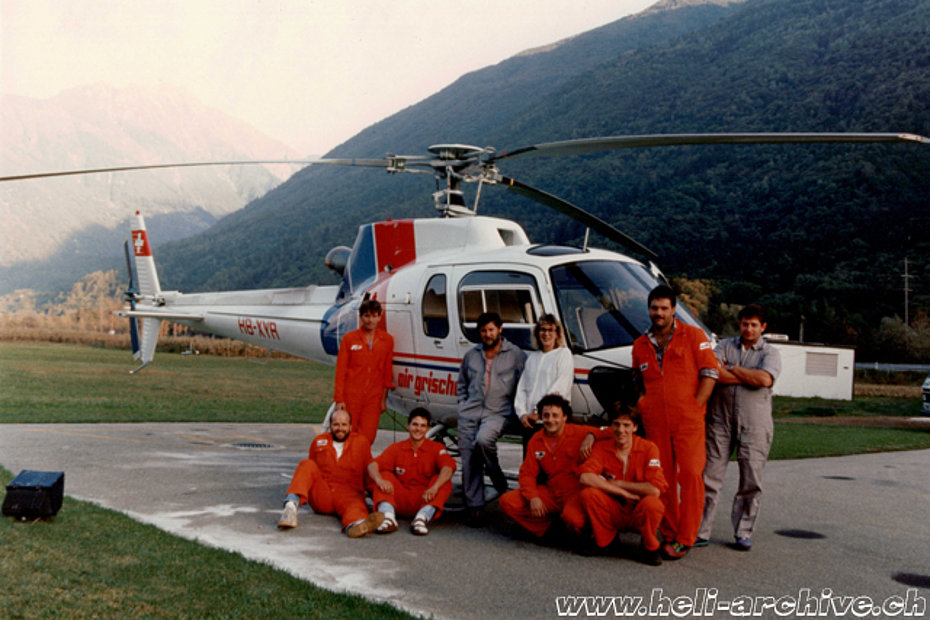
Air Grischa together with Linth Helikopter, Säntis-Heli and Heli-Trans Pilatus were among the first Swiss helicopter operators to employ this modern aircraft.
The first, bought by the Grison company in 1979 with call sign HB-XFY was transferred to San Vittore/GR to support their SA 315B Lama. On the latter, Heinz von Wyl carried out the type-rating course on April 22, 1981 after having flown with Fritz Althaus 24 minutes and 8 landings at the control of HB-XFX, a lightning time if we consider the formalities of today!
The first commercial flights on behalf of Air Grischa began in spring. On April 13 at the controls of HB-XFY he did some fire-fighting flights in Roveredo/GR.
Engine failure
On July 20, 1981 while carrying out transportations of concrete near Arvigo (Calanca Valley/GR) at the controls of HB-XFY he had a new accident caused by a turbine failure.
Immediately after lifting the bucket containing the concrete the pilot was surprised by the noise of an explosion and the sudden loss of rotor rpm.
The helicopter immediately lost altitude and after skimming tree tops crashed into the woods below with the concrete bucket still attached.
Even in that accident, caused by a fatigue rupture of the injection wheel of the Turboméca Arriel 1B, he fortunately did not suffer injuries but because of the serious damages reported, the helicopter was cancelled from the Swiss aircraft register.
Having recovered from the scares, the following day he went to Bad Ragaz/GR to take over HB-XLU another AS 350B Ecureuil owned by Air Grischa.
In the following years Heinz von Wyl carried out an intense flight activity (averaging annually 600-650 hours of flight), mainly at the controls of the SA 315B Lama and AS 350B Ecureuil.
The two helicopters of Air Grischa that were normally based in San Vittore during the summer months carried out a hectic activity mainly in Calanca Valley, in the Mesolcina Valley, in Riviera but also in the Locarno region where the company had managed to retain many customers.
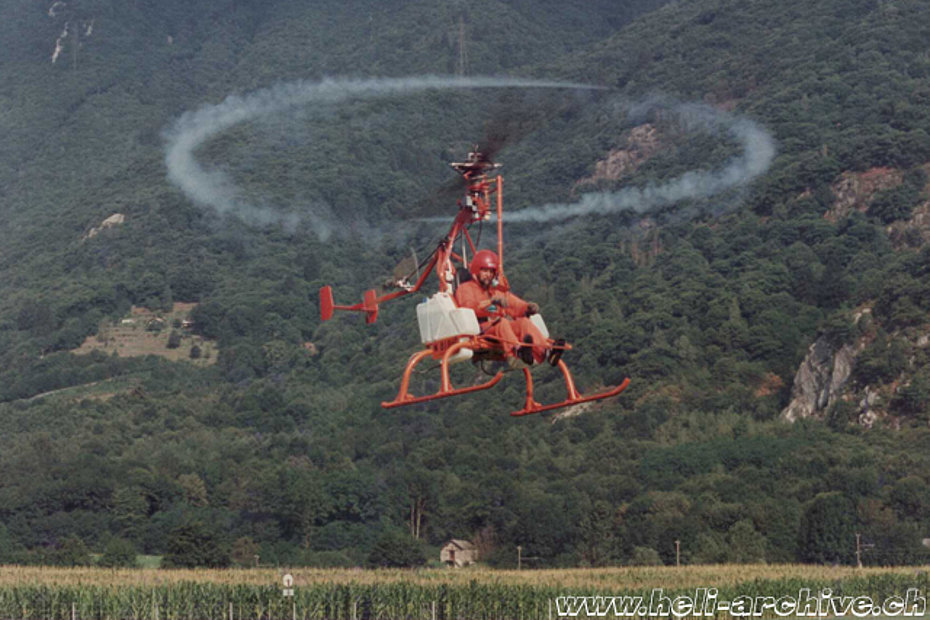
Test pilot
Starting from autumn 1987 Heinz von Wyl performed a very interesting but also very unusual activity for a Swiss, that of test pilot.
That same year the Swiss company Afibra Handels bought the patents and what remained of the Aerospace General Co. of Odessa, a Texas company founded by Gilbert W. Magill.
The latter in the early 1950’s had founded the company Rotor-Craft and had ventured into the construction of some experimental helicopters. In addition to a two-seater with tandem rotors, on behalf of the U.S. Navy he developed a single-seater dubbed Rotor-Craft HR-1 "Pinwheel" which did the first test flights in 1954. The mini-helicopter was powered by two pulsejets mounted at the ends of the blades powered by hydrogen peroxide.
Later Magill founded the aforementioned Aerospace General Co. and worked on the design of a helicopter designated Mini-Copter ordered in three prototypes by the US Navy. This model should have been used by pilots shot down behind enemy lines or Special Forces members.
The first of these prototypes flew on March 31, 1973. The development program ended in 1977 and the three prototypes were transferred to the US Army for evaluation. The development continued until 1983 but then the cuts in defense spending apparently put the final word to the project.
After the bankruptcy all that remained of Aerospace General was acquired, as already mentioned, by the company Afibra Handels based in Zug.
On behalf of the latter company in 1987 the American manufactured Advanced Technologies Inc. headquartered in Newport News, Virginia, built two experimental single-seater registered as CH1 ATI N9042F and N9042N. These two mini-helicopters were shipped to the heliport of San Vittore/GR where the flight tests began.
On November 5, 1987 Heinz von Wyl, who in the meantime had logged over 5,600 hours of flying at the controls of various helicopters, officially performed the first tests with the single-seater registered N9042F. On December 7, he did some demonstration flights for the members of the company's board of director.
Frequent transfers abroad
In the role of test pilot Heinz von Wyl went several times to the United States. Between April 5 and May 20, 1988, he carried out a series of test flights in West Point (Virginia/USA) with the prototypes N9042F and N9042N.
These flights served to test the functioning of the pulsejets through which the thermal energy is transformed into kinetic energy by expanding into a nozzle of appropriate size and form the gases produced by the reaction.
However, his main activity over the years remained that of commercial pilot and chief-base on behalf of Air Grischa.

From 1992 onwards he resumed occasional flight instructor activity. In this capacity he went to the airfield of Buttwil/AG where he did some training flights on the Enstrom F-280C helicopter. Then during the following summer in Gerona (Spain) on behalf of Helitrade AG he trained some Spanish pilots using the Enstrom F-280C HB-XNR. In the meantime he did commercial flights at the controls of the SA 315B Lama and SA 316B Alouette 3. At the end of 1993 he had accumulated some 8,000 hours of flight at the controls of various helicopters.
During 1994, he mainly carried out commercial flights on behalf of Air Grischa, but then in the following years he reduced his flight activity to a maximum of one hundred flying hours per year, mainly on the SA 315B Lama and AS 350B2 Ecureuil.
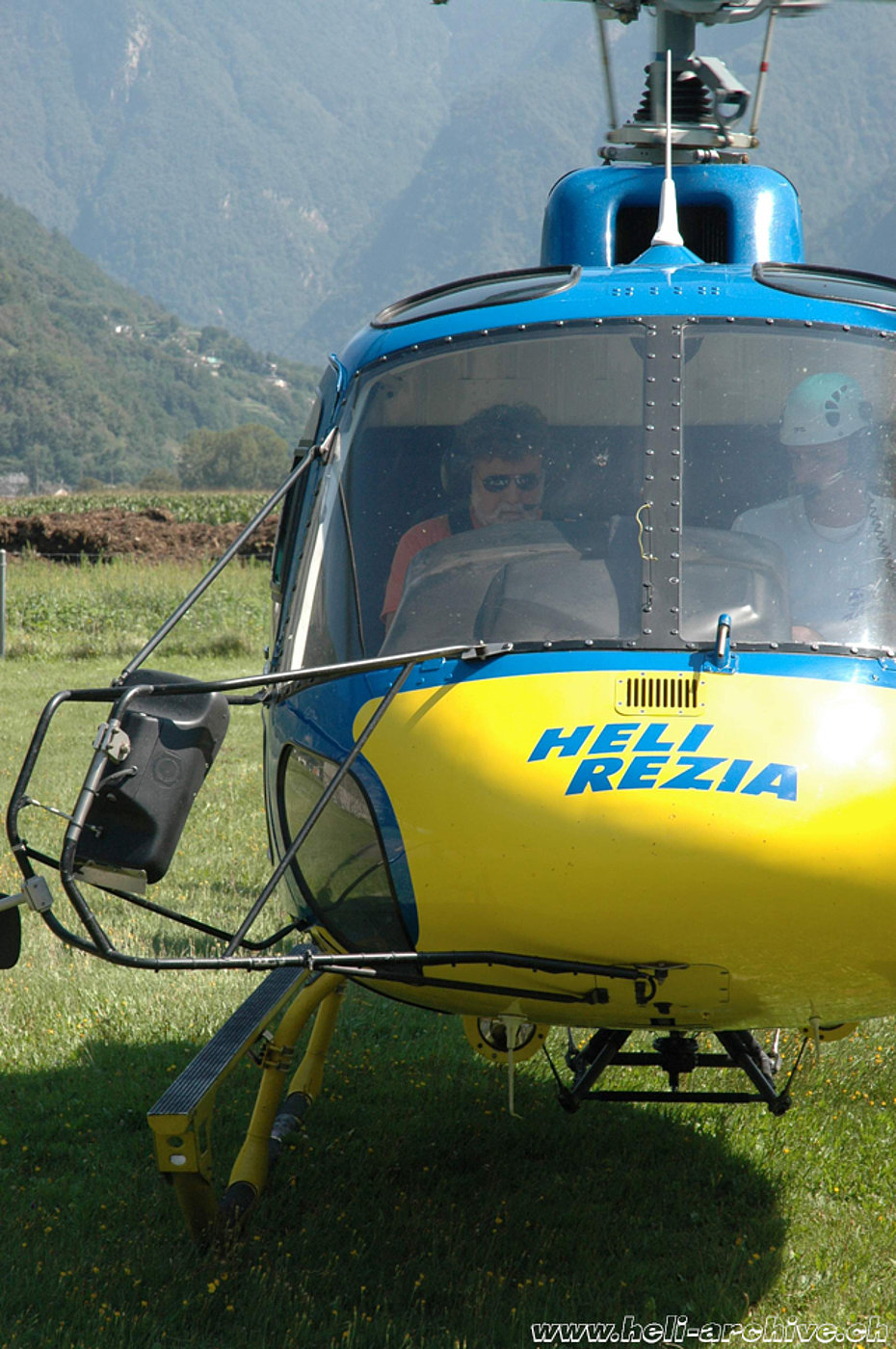
At the end of 1996 he left Air Grischa. In spring 1997 he began to fly on behalf of Tarmac Aviation, which at the time employed a single helicopter (AS 350B2 Ecureuil HB-XXW).
During 1998 the development program of the mini-helicopters powered by hydrogen peroxide passed into the hands of the English company Intora Firebird, and thus Heinz von Wyl was asked to carry out new test flights which began on April 20-21 in Arlington (England) with the prototype N8186E.
Between 25 and 29 August the flight tests continued in Southend (England). On that occasion the helicopter received the new registration G-BXZN and was presented as static exhibit at the Aeronautical Exhibition of Farnborough (7-13 September 1998).
During the period from 8 to 19 November 1998 Heinz von Wyl carried out several demonstration flights with the helicopter registered G-BXZN.
Other flights followed in November and December and in the following spring. Between 8 and 19 November 1999 with the same helicopter he carried out several demonstration flights in Dubai (United Arab Emirates).
In the following years he further reduced the flying activity arriving to make some dozens hours of flight per year especially during the summer period mainly at the controls of the AS 350B3s Ecureuil operated by Tarmac Aviation or Heli-Rezia.
In 2002 Heinz von Wyl created the Von Wyl & Partners architectural studio in Roveredo/GR.
After some disputes between the partners the test flights with the Intora Firebird helicopters resumed during the autumn 2009.
The following year he traveled to Oshkosh (Wisconsin), where between July 27 and the annual EAA Air Venture and Air Show was held (the largest such event organized in the United States with an average attendance for each event varying between 200 and 300,000 spectators). There he presented in flight the helicopter registered NX-132DF. Those were the last flights made with the experimental helicopters propelled by hydrogen peroxide.
On February 24, 2012, according to his flight book, he made his last flight. In the course of the morning he sat at the controls of the SA 315B Lama HB-ZWA of Heli-Rezia for a short test flight.
During his long activity as a commercial helicopter pilot Heinz von Wyl logged a total of 9,455 flight hours and 48,733 landings. The list of helicopters he piloted includes: Bell 47 (1976), Enstrom F-28 (1977), Hughes 500 (1977), Bell 206 Jet Ranger (1978), SA 319B Alouette 3 (1978), Hughes 269 (1978), Hiller UH-12E4T (1980), AS 350B Ecureuil (1981) B1, B2, B3, SA 315B Lama (1981), single and two-seater prototypes powered by hydrogen peroxide engines.
Many customers and co-workers remember him fondly for his proverbial calmness and the aroma of tobacco coming from the pipe that he used to smoke even in flight.
Interesting link
Here is an interesting link where it is possible to watch Heinz von Wyl while testing the CH1 ATI (Intora Firebird) experimental helicopter:
https://www.youtube.com/watch?v=CGcRgEuCocQ
https://www.youtube.com/watch?v=O9S_Qmn-CEM
Last but not least I want to express my gratitude to Heinz family for their help to prepare this article.
HAB/May 2019

